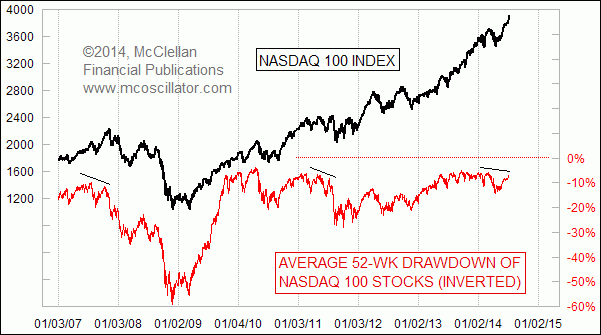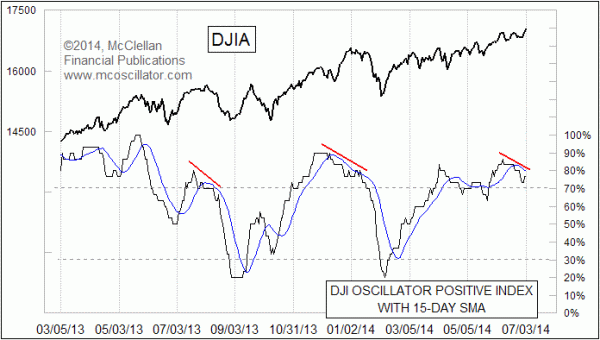No matter what, SocGen sees US equity performance over the next 10 years as modest at best.They note that US equities face three headwinds: cyclically-adjusted valuations (CAPE, starting date 1881) have returned to very expensive territory, corporate margins stand at historically high levels, and after already five years of growth from the 2009 trough, we estimate that the probability of another recession kicking in is close to 100% within the forecast timeframe (the longest cycle ever was 120 months, or 10 years). While their central case is 'moderate growth and inflation', they project a possible high growth surge to 4000 for the S&P 500 and a deflation scenario which would put the S&P 500 at 500 (-12% per annum).
Via SocGen,
This is the second edition of our 10-year equity outlook. The first was published in July 2009, when the economic consensus was still weighing up deflation fears and valuations were depressed (read: an excellent entry point.). At the time we set an S&P500 target of 1300 under our central scenario (in mid-June 2009 it was 923).
[ZH: So in 2009 they forecast the S&P to be at 1300 in 2019... and we are now 50% higher than that already!!]
US equities
US equities face three headwinds:
cyclically-adjusted valuations (CAPE, starting date 1881) have returned to very expensive territory,
corporate margins stand at historically high levels, and
after already five years of growth from the 2009 trough, we estimate that the probability of another recession kicking in is close to 100% within the forecast timeframe (the longest cycle ever was 120 months, or 10 years).
A recession costs on average a 22% drop in US earnings
The most recent economic recession triggered by the collapse of Lehman Brothers caused an unprecedented wave of US earnings downgrades and was comparable in effect to the two previous oil shocks, the Gulf war and the Dot-Com bubble burst.
But US equities have supports as well, such as impressively strong balance sheets and the beginning of a new M&A cycle, backed by a highly reactive central bank.
Central scenario: moderate economic growth and inflation
Our central scenario projects moderate underlying economic growth of 5% per year over the next few years, i.e. below the long-term growth trend (8.6%). We have also adopted a scenario whereby inflation will gradually increase at a modest rate, until it pushes down the normalised 10-year moving P/E rate slightly, to below its long-term average of 20x. Based on these assumptions, we expect the S&P 500 to rise by +3% p.a. and reach 2500 points in 10 years.
But there are 3 Altnerative Scenarios...
Alternative scenario 1: sharp growth & high inflation +2%/yr
In a high inflation scenario, two opposing forces go head to head: on the one hand, inflation prompts an acceleration in (nominal) reported corporate profits and, on the other, it reduces equity valuations. The combined forces would be likely to have a positive impact on equity markets (+2%). In this scenario, while nominal returns are positive, real returns would be eaten up by inflation.
Alternative scenario 2: sharp growth & moderate inflation +8%/yr
In this scenario, the equilibrium between growth and inflation would be well managed by the central banks and /or the US gas shale revolution would help maintain inflation within a low range. This is a kind of continuation of the trend we have observed over the last couple of years in the US. On this assumption, equity market P/Es would remain high and corporate profits would accelerate rapidly. Our scenario would yield an annualised equity index slope of about 8%, pushing the S&P 500 to 4000 points at the end of the period.
Alternative scenario 3: depression -12%/yr
We have no doubt that a deflation scenario, like that of the 1930s in the US, would considerably damage corporate profits and the equity market valuation, eventually impacting the equity markets themselves. We saw this in Japan between 1995 and 2005, when the collapse in listed Japanese company ROEs severely cut into their equity valuations and thus the Nikkei index. We believe such a scenario would put the S&P 500 at 500 points in 10 years (-12% p.a.).










































